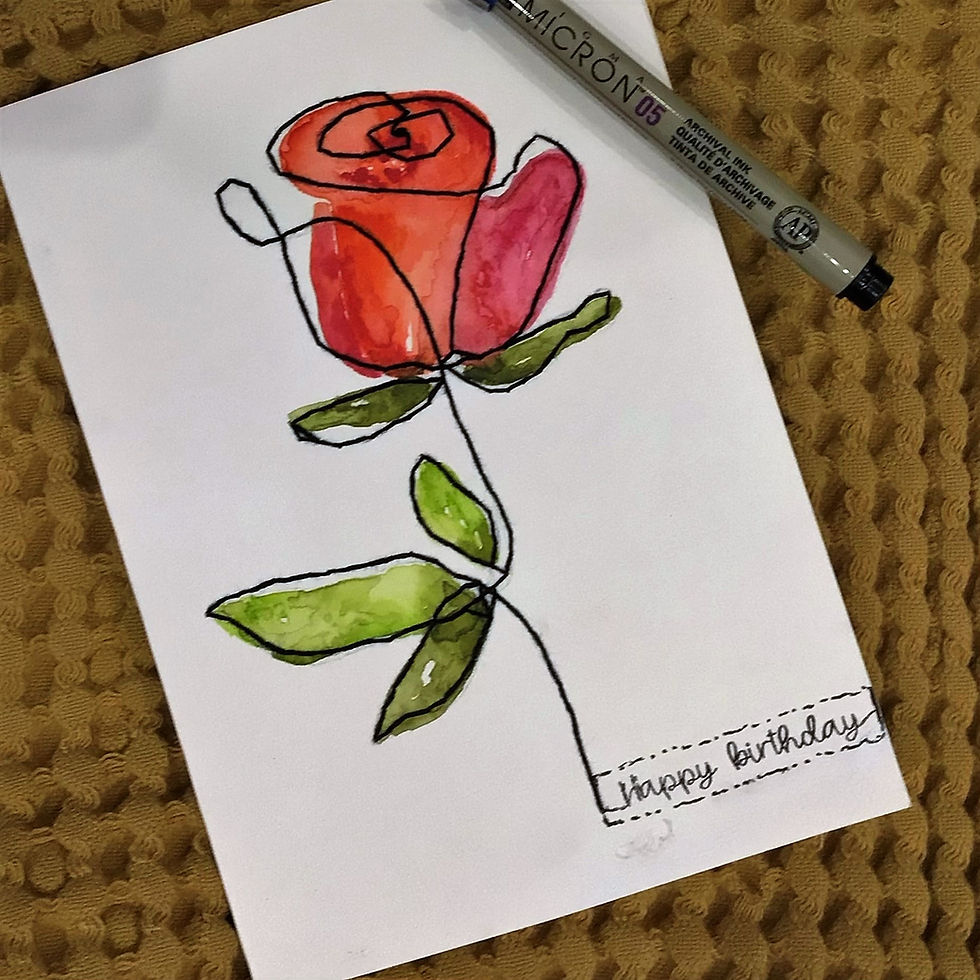How to Eco-Print on Paper
- Chestnut Grove Studios

- Aug 3, 2020
- 2 min read
Updated: Aug 25, 2020
Opening the packet after eco-printing is like opening a present. You have no idea what is inside.
Eco-printing is fairly easy, and you probably have most of the things you need already stashed away in your kitchen and craft table. I will walk you through a recent eco-printing session I did in just 7 simple steps.
Step 1: Gather your supplies.
- an old stock pot, roasting pan, or deep metal casserole pan
- white vinegar
- red food coloring
- watercolor paper, copy paper, envelopes, etc.
- twine
- 2 pieces of stiff mesh screen (similar to chicken wire*)
- some "rusty bits" (old nails, steel wool, rusty chain)

Step 2: Gather some leaves, flowers, berries, etc from outside

Step 3: Place 1 piece of your screen (or other hard surface) onto your work table. Lay a piece of your watercolor paper on top of the screen, then begin to layer your leaves and flowers onto the paper. Repeat with layers of watercolor paper, leaves and flowers, paper, leaves, paper, leaves, etc. Top with a final piece of paper and your other piece of screen.
Step 4: Tie up your layers with twine to make a packet. Make sure it is fairly tight by wrapping the twine around the entire length and width of the packet.


Step 5: Put your rusty bits into a stock pot; add 1 gallon of water, 1/2 cup vinegar and 4-6 drops of red food coloring to the pot and bring to a boil. Add your packet to the water until it is completely submerged. You may need to add more water and/or weight it down with a rock or other heavy object.
Step 6: Simmer for 45 minutes - 1 hour.
Note: if you have an outdoor gas or electric grill, you may want to do this outside, or open your windows if working inside.
Step 7: Remove your packet from the stock pot and carefully unwrap the twine. Gently pull the papers apart and rub off the plant material to reveal your beautiful eco-print presents!
Notes: I used a combination of watercolor paper and copy paper. I did not see a difference in the way the paper absorbed color or pattern. However, the copy paper was more susceptible to tearing when pulling apart. The copy paper also did have a few spots/holes where some of the plant material poked thru when I bound up the packaging. I will be using the copy paper pieces on collage work, so any tears, or holes can be worked around. The watercolor papers pieces will be used for note cards. If you do use gummed envelopes in your eco-print package, be sure to fold the flap with the gummed strip to the outside so the boiling process does not adhere the flap to the envelope.
I hope you give eco-printing a try - you may just surprise yourself with some pretty incredible results.
Click to download a printable notecard made from one of the eco-prints. Print on cardstock and follow direction to make a card and envelope.




































Comments